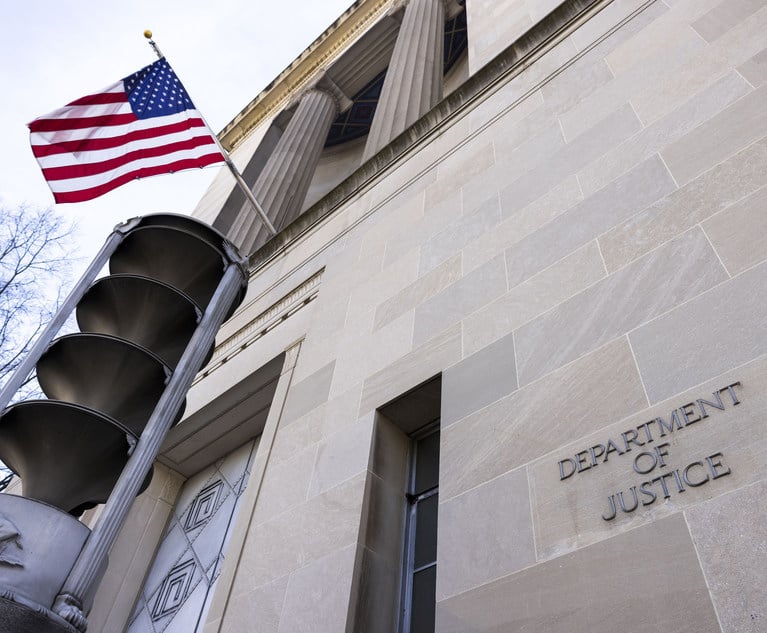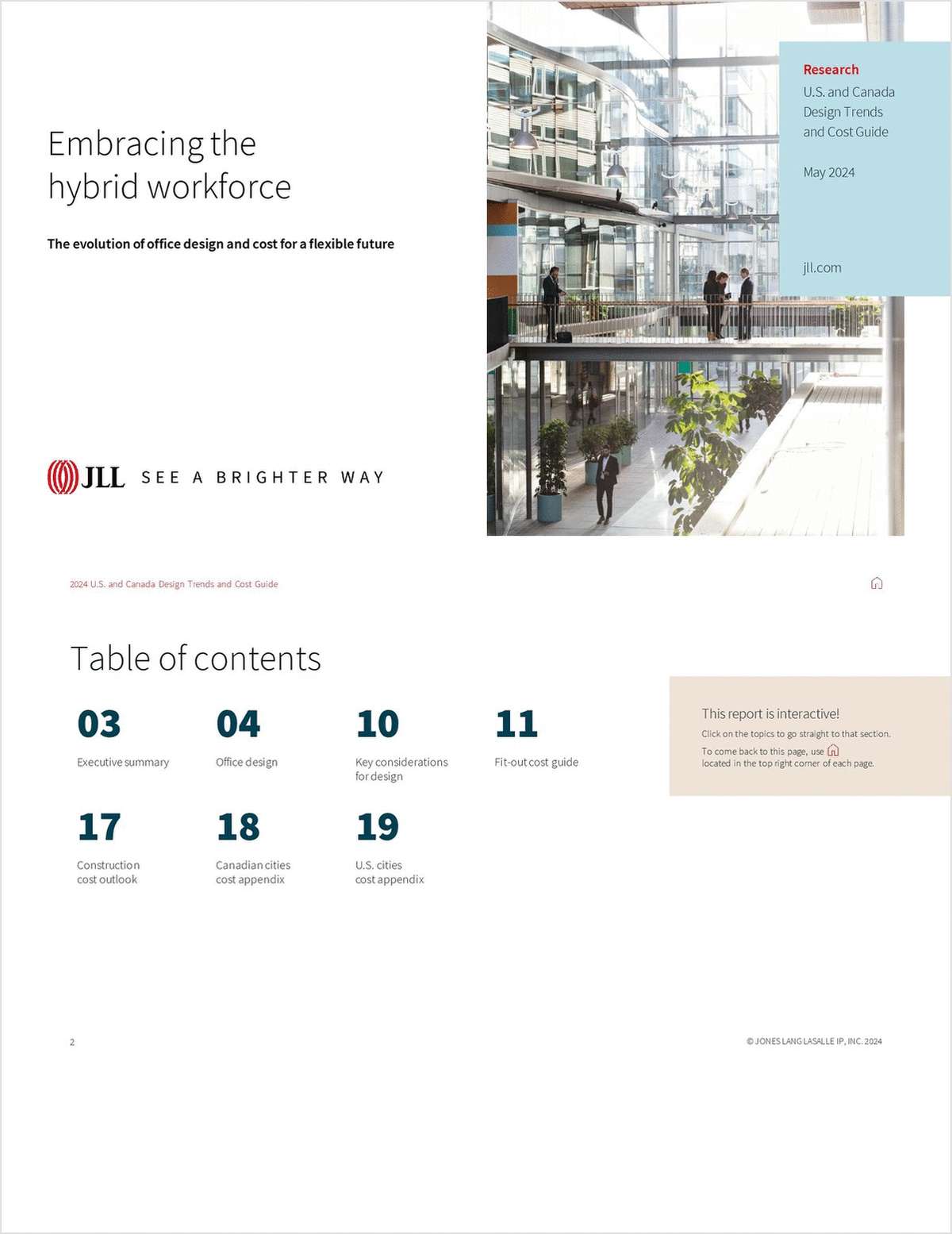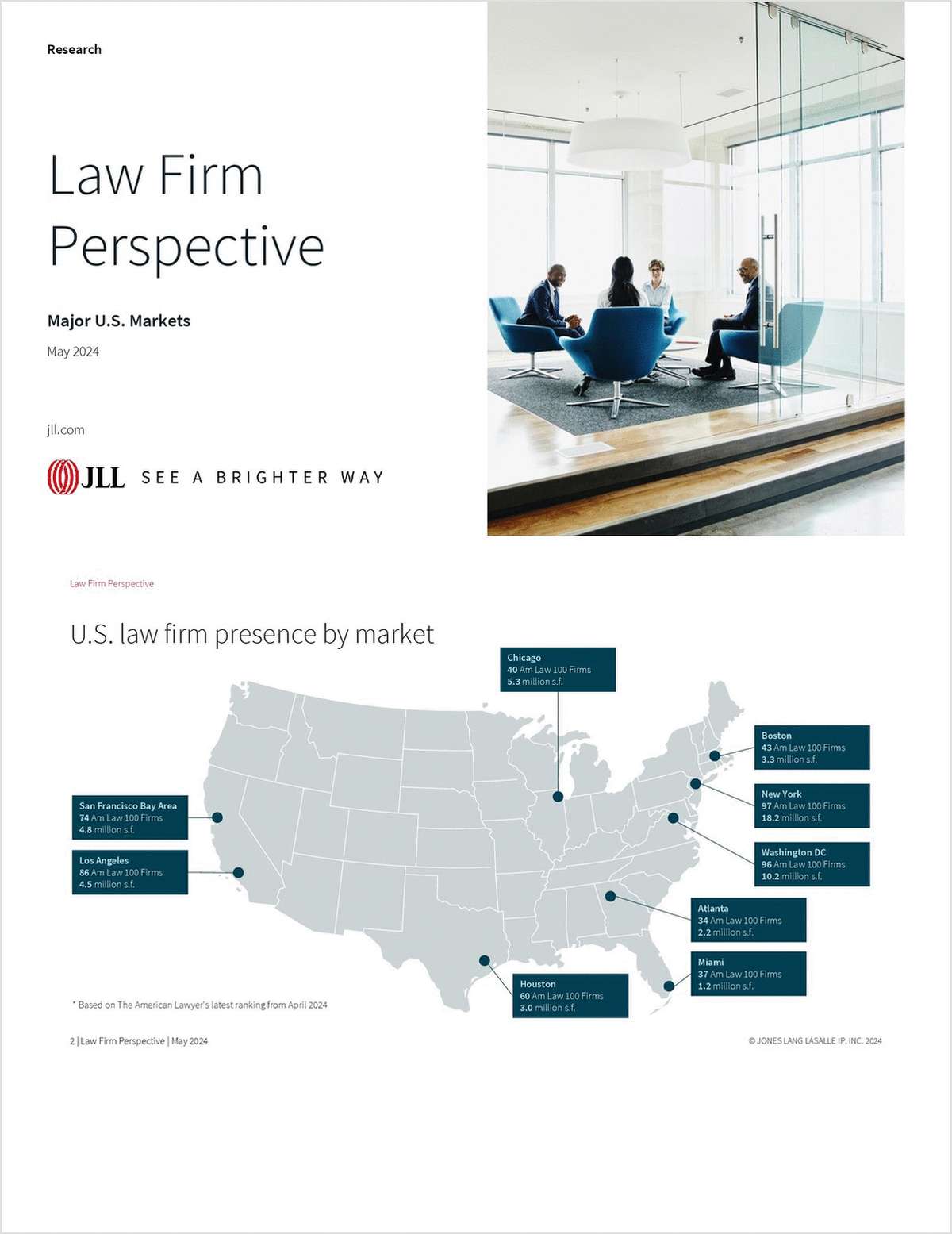 Photo: Shutterstock
Photo: ShutterstockOutside the Office, They Want Inside Your Pants
An astounding 49.6% of sexual harassment in the legal profession occurs at work social events, according to a sweeping survey from the International Bar Association.
May 17, 2019 at 12:30 PM
5 minute read
I loathe to say this, but I'm beginning to think that Mike Pence has a point. You put men and women together without their spousal chaperones, add a dash of alcohol, and voila! Stuff happens.
The “Us Too” report released by the International Bar Association (click here for my take on the general findings) seems to confirm Pence's point, and it's a downer. In a nutshell: If you're a female lawyer, your chances of getting sexually harassed are way better than getting run over by a Citibike. Then, if you put the sexes in a social situation outside the office, a few obnoxious remarks could morph into something worse.
But first, let me give you some stats from the report, and it's no laughing matter: One in three female lawyers experienced sexual harassment at work, while only one in 14 males say the same. For women at law firms, 32.7% say they've been sexually harassed—which, believe it or not, is quite low compared with other sectors in the legal world. For instance, 52.5% of women in government, 46.6% in the judiciary and 42% in corporations reported harassment. Gee, who would have guessed that firms are the enlightened ones?
While the workplace (75%) was where most harassments happened, an astounding 49.6% occurred at work social events, followed by 18.7% during work travel and 15.5% at conferences.
 Though harassment in the survey covers a range of behaviors—from sexist comments to assault and rape—the report says that “more severe forms of sexual harassment (e.g., seriously inappropriate physical contact) were more likely to occur outside the office.” And the report says that harassment associated with social events happens at higher rates “among respondents at midsized to large law firms than at small firms.” (Query: Is it because bigger firms give more fun parties with superior alcohol selections?)
Though harassment in the survey covers a range of behaviors—from sexist comments to assault and rape—the report says that “more severe forms of sexual harassment (e.g., seriously inappropriate physical contact) were more likely to occur outside the office.” And the report says that harassment associated with social events happens at higher rates “among respondents at midsized to large law firms than at small firms.” (Query: Is it because bigger firms give more fun parties with superior alcohol selections?)
What gets really interesting is who's harassing whom. The report finds that “hierarchy and power imbalance play less of a role in sexual harassment incidents; relative to bullying, supervisors were significantly less likely, while equal and junior colleagues were significantly more likely, to be the perpetrator of sexual harassment.”
In other words, harassers will harass, even up the chain of command. Some 27.8% of respondents say they were harassed by “someone of equal seniority,” while 10.6% got harassed by “someone junior to you.” And 20.6% say that clients were offenders too.
Which brings us to Pence. Remember how he famously said he won't dine alone with a woman or attend social events that served alcohol unless his wife (“Mother”) accompanied him? We all laughed at how silly and prudish he is. But maybe he's not completely wrong.
Perhaps Pence was trying to warn us that behind some men, even schlumpy lawyers, there's a lech who's waiting to pounce—a smaller-than-life Donald Trump, if you will. (You'll recall how Trump boasted to Billy Bush that he turns into a kissing magnet in front of an attractive woman.)
All of this is very bad news for women who've been trying to cultivate men as mentors, clients or colleagues. All that effort women have put into forming meaningful relationships with men on the job—raising their hands to work one-on-one with rainmakers, making themselves available for business trips at a moment's notice, initiating social gatherings, taking up golf—now it looks like they were just setting themselves up for trouble.
Maybe it's just safer to let boys hang out with the boys. I mean, maybe a mature, nonsexual relationship between men and women outside of the confines of an office is just not feasible.
That should not be the takeaway, says Kieran Pender of IBA's research unit, who authored the report. “The obligation should not be on women to avoid harassment, but on the profession and individual workplaces to stamp out these forms of misconduct,” says Pender in his email to me. “For example, organisers of work social events need to take additional steps to prevent harassment in those contexts, including by reminding attendees of the expected standards of behaviour.”
Of course, Pender is right. But it's going to take a while for everyone to reach enlightenment. Organizations can probably take steps to ensure that social gatherings are safe, but what about the one-on-one interactions between the sexes?
In the meantime, one silver lining in the report is that women will experience less sexual harassment as time goes on. Harassment was most prevalent for women in the 25 to 29 age group (19.4%), then the 30-34 age group (16.1%), dropping to the single-digit rate by the time a woman is in the 40 and older group. (For men, harassment was most common in the 30-34 age group at 3.8%, then drops to the 1.7% to 1.8% until they hit the 44-49 age group when it bounces back to 3%. So unfair but men do seem to get a second wind in middle age.)
So, yes, at some point, harassment will dissipate for women.
I'm not sure that's going to make women feel better, but there it is.
Contact Vivia Chen at [email protected]. On Twitter: @lawcareerist.
This content has been archived. It is available through our partners, LexisNexis® and Bloomberg Law.
To view this content, please continue to their sites.
Not a Lexis Subscriber?
Subscribe Now
Not a Bloomberg Law Subscriber?
Subscribe Now
NOT FOR REPRINT
© 2024 ALM Global, LLC, All Rights Reserved. Request academic re-use from www.copyright.com. All other uses, submit a request to [email protected]. For more information visit Asset & Logo Licensing.
You Might Like
View All
A Look Back at High-Profile Hires in Big Law From Federal Government
4 minute read

Government Attorneys Are Flooding the Job Market, But Is There Room in Big Law?
4 minute read
Trending Stories
Who Got The Work
Michael G. Bongiorno, Andrew Scott Dulberg and Elizabeth E. Driscoll from Wilmer Cutler Pickering Hale and Dorr have stepped in to represent Symbotic Inc., an A.I.-enabled technology platform that focuses on increasing supply chain efficiency, and other defendants in a pending shareholder derivative lawsuit. The case, filed Oct. 2 in Massachusetts District Court by the Brown Law Firm on behalf of Stephen Austen, accuses certain officers and directors of misleading investors in regard to Symbotic's potential for margin growth by failing to disclose that the company was not equipped to timely deploy its systems or manage expenses through project delays. The case, assigned to U.S. District Judge Nathaniel M. Gorton, is 1:24-cv-12522, Austen v. Cohen et al.
Who Got The Work
Edmund Polubinski and Marie Killmond of Davis Polk & Wardwell have entered appearances for data platform software development company MongoDB and other defendants in a pending shareholder derivative lawsuit. The action, filed Oct. 7 in New York Southern District Court by the Brown Law Firm, accuses the company's directors and/or officers of falsely expressing confidence in the company’s restructuring of its sales incentive plan and downplaying the severity of decreases in its upfront commitments. The case is 1:24-cv-07594, Roy v. Ittycheria et al.
Who Got The Work
Amy O. Bruchs and Kurt F. Ellison of Michael Best & Friedrich have entered appearances for Epic Systems Corp. in a pending employment discrimination lawsuit. The suit was filed Sept. 7 in Wisconsin Western District Court by Levine Eisberner LLC and Siri & Glimstad on behalf of a project manager who claims that he was wrongfully terminated after applying for a religious exemption to the defendant's COVID-19 vaccine mandate. The case, assigned to U.S. Magistrate Judge Anita Marie Boor, is 3:24-cv-00630, Secker, Nathan v. Epic Systems Corporation.
Who Got The Work
David X. Sullivan, Thomas J. Finn and Gregory A. Hall from McCarter & English have entered appearances for Sunrun Installation Services in a pending civil rights lawsuit. The complaint was filed Sept. 4 in Connecticut District Court by attorney Robert M. Berke on behalf of former employee George Edward Steins, who was arrested and charged with employing an unregistered home improvement salesperson. The complaint alleges that had Sunrun informed the Connecticut Department of Consumer Protection that the plaintiff's employment had ended in 2017 and that he no longer held Sunrun's home improvement contractor license, he would not have been hit with charges, which were dismissed in May 2024. The case, assigned to U.S. District Judge Jeffrey A. Meyer, is 3:24-cv-01423, Steins v. Sunrun, Inc. et al.
Who Got The Work
Greenberg Traurig shareholder Joshua L. Raskin has entered an appearance for boohoo.com UK Ltd. in a pending patent infringement lawsuit. The suit, filed Sept. 3 in Texas Eastern District Court by Rozier Hardt McDonough on behalf of Alto Dynamics, asserts five patents related to an online shopping platform. The case, assigned to U.S. District Judge Rodney Gilstrap, is 2:24-cv-00719, Alto Dynamics, LLC v. boohoo.com UK Limited.
Featured Firms
Law Offices of Gary Martin Hays & Associates, P.C.
(470) 294-1674
Law Offices of Mark E. Salomone
(857) 444-6468
Smith & Hassler
(713) 739-1250










